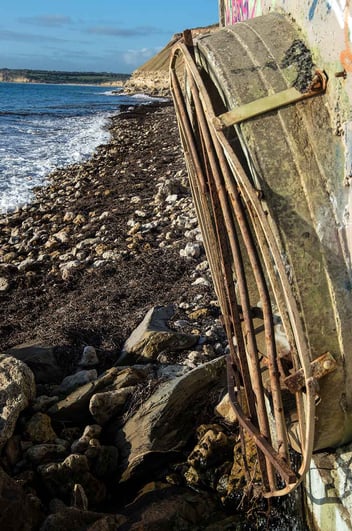Calculating the true cost of integrated urban water management
Integrated Urban Water Management (IUWM) initiatives are helping us to address a series of complex and interconnected issues: water scarcity, climate change, growing population and growing water demand.
All around the world now, governments are looking at alternative water supply options such as rainwater, stormwater, recycled wastewater and desalination, but there is still a significant gap in understanding the; optimal mix, scale and energy use of these alternative options.
These alternatives provide additional supply source and help mitigate flood and stream pollution when implemented carefully, but as University of Melbourne’s Senior Lecturer in Environmental Engineering Dr Meenakshi Arora has argued, these IUWM initiatives are often analysed through a fairly narrow lens.
“Most of the water management decisions are based on the water balance perspective and simplistic cost-benefit analysis that largely considers the cost of investment versus savings in water bills or distribution costs," she said.
"These analyses do not sufficiently account for the environmental and social sustainability. In many cases, what looks and sounds good may in fact lead to an overall low water productivity."
Dr Arora used Melbourne’s response to the Millennium Drought as an example: “When the panic set in during the Millennium Drought, government invested in a desalination plant that delivers very expensive water as well in the north-South pipeline,” she said.
Though these large and expensive infrastructure provide security for the future Melbourne water supply, the decisions were not based on the systematic evaluation of all the available options due to lack of a comprehensive framework for comparative evaluation of all potential solutions.
Traditional cost-benefit analyses may also overlook important benefits of IUWM solutions, Dr Arora said.
“That may be water saved, recreational value, how much food we can produce with that water, what industrial products are being produced, wellbeing and health bills,” she said.
Water productivity
Dr Arora and her team aim to develop an assessment tool that water utilities can use to consider all of the hidden costs and benefits of IUWM initiatives.
“We propose to use ‘water productivity’ as a tool to evaluate water service options to enable a comprehensive evaluation of alternative solutions. Water productivity is an innovative approach that looks at producing more goods and services – such as food, industrial products, income, health and wellbeing – at less social, economic and environmental cost per unit of water used,” she said.
“Water productivity considers all of the values created and the costs incurred from each litre of water.”
There are three main sets of attributes that lead to higher productivity for each unit of water used: demand reduction (using less water), water substitution (reusing rainwater or grey water without treatment) and water regeneration (reusing stormwater or wastewater after treatment for non-potable or potable use).
Developing a robust decision analysis tool
The task ahead for Dr Arora and her team begins with developing a conceptual framework that factors in all of the potential costs and benefits of various IUWM solutions.
“Firstly we will identify which variables we should be considering and the second step will be how to quantify them,” she said.
“The third step will be using a modelling platform which identifies all those variables and their interdependencies.” Importantly, the team aims to deliver a tool that will be adaptive to different locations and priorities.
“We will use a multi-criteria decision analysis tool, which will actually consider all of the criteria and provide a score for each option.
“You will then be able to rank them depending on the set of identified objectives,” she said.
The project aims to deliver:

“For instance, the issue for one city might be that we just don’t have enough water, so the prime objective is supplying fit-for-purpose water.
“For another city it might be that we have been able to provide enough supply but we have done a very bad job of maintaining our rivers, so the prime objective is how can we start to clean them up.”
Testing the tool
To validate the tool, the University of Melbourne researchers will work across two very different demonstration sites.
“The tool is ultimately only as good as it works in the fi eld so we are working with South East Water so that we can test some of these ideas at the Fishermans Bend precinct in Melbourne,” Dr Arora said.
“We are also working very closely with the Indian Institute of Technology, Kharagpur and we have a jointly-funded project to explore this idea in Kharagpur in North-East India.”
Dr Arora hopes that the tool will help water utilities around the world solve the issue of water scarcity.
“Basically our group is working on providing solutions to future-proof the water supply and reduce reliability on rainwater collected in reservoir as well as keep our waterways clean, so that we don’t press the panic button and choose the most sustainable solutions instead.”
Dr Meenakshi Arora is a Senior Lecturer at The University of Melbourne. She teaches Water and Waste Water Management, Groundwater Hydrology and supervises post-graduate students.
First published as ‘Calculating the true cost of integrated urban water management initiatives’ in Current magazine October 2019.

